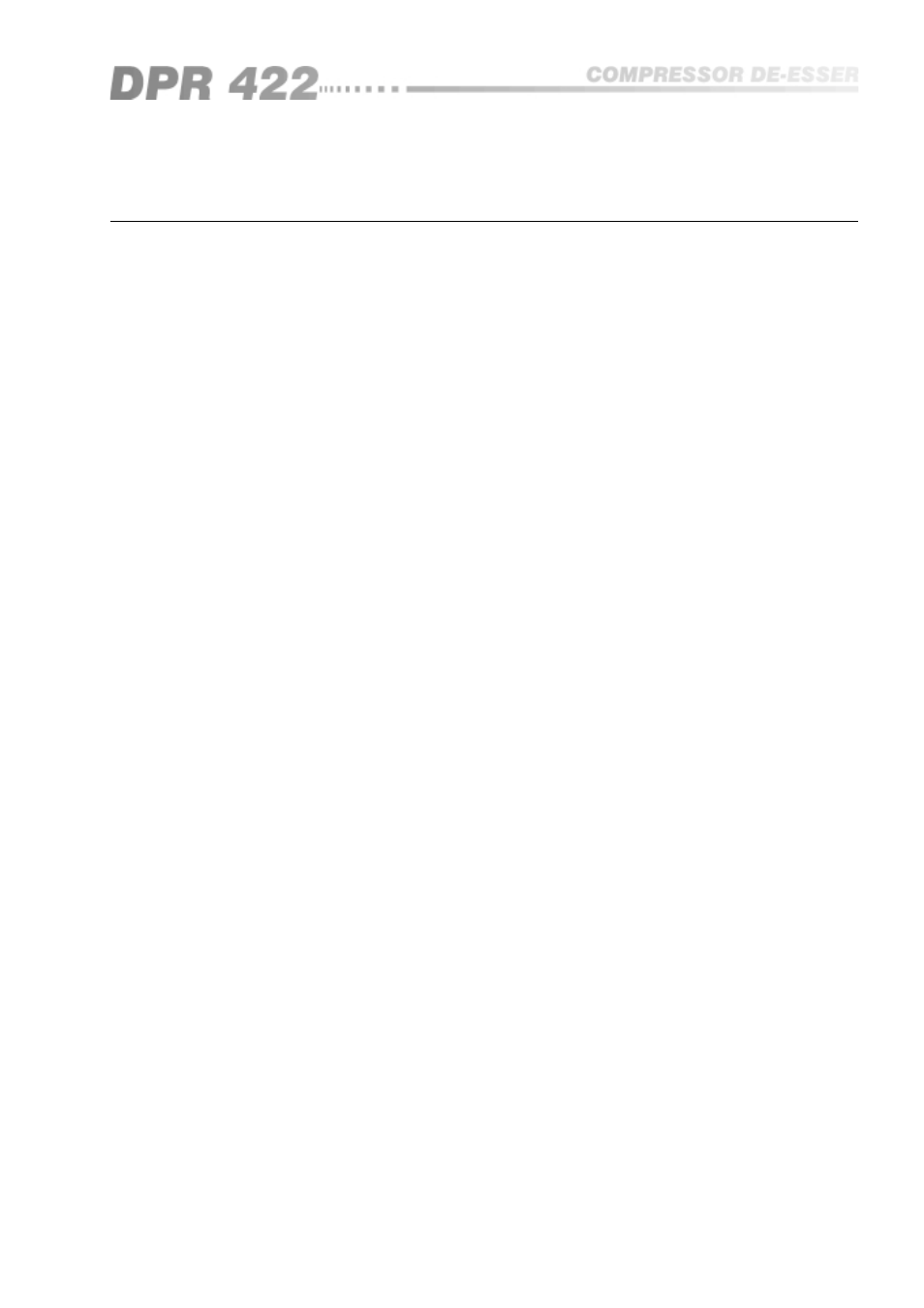0 glossary, Glossary – BSS Audio OPAL Series DPR-422 Owner's Manual User Manual
Page 31

31
13.0
Glossary
Active
Active electronic circuits are those which are capable of voltage and power
gain by using transistors and integrated circuits.
Amplitude
Refers to the voltage level or intensity of a signal, and is usually measured in
voltage or decibels.
Attack Time
The amount of time taken for the compressor or limiter to kick in and start
gain reduction once the input signal has exceeded the threshold level. This is
usually measured in micro or milliseconds (millionths or thousandths of a
second).
Balanced
A three wire connection in which two of the wires carry the signal
information, and the third acts as a shield tied to chassis ground. The two
signal lines are of opposite polarity (out of phase by 180 degrees) at any given
moment in time, and are of equal potential with respect to ground. Balanced
connections are used to reduce hum and noise in system interconnections.
Breathing
A term used to describe the fluctuations of background noise resulting from
the compressor action.
Compressor
An electronic circuit which reduces its input to output gain as the input
signal increases above a predetermined threshold level.
dB
A unit for expressing the ratio between two signal levels for comparison
purposes. On its own it has no absolute level meaning. Rather, it is a
logarithmic ratio used to express the differences between two amounts or
levels. Positive numbers indicate an increase, and negative ones a decrease.
Some useful ratios are:
+3dB
=
Double Power
+6dB
=
x 2 Voltage or x 4 Power
+10dB
=
x 3 Voltage or x 10 Power
+20dB
=
x 10 Voltage or x 100 Power
dBm
The addition of ‘m’ after dB indicates an absolute scaling for the dB ratio.
Instead of a ratio, the dB becomes a measure of voltage. 0dBm = a power
level of 1 milliwatt into a load of 600 ohms. It is also loosely used to describe
signal voltage in 600 ohm circuits.
dBu or dBv
The addition of ‘u’ or ‘v’ after dB indicates an absolute scaling for the dB
ratio. 0dBu (or 0 dBv) = 778mV or 0.778 Volts, and it has no regard for power
or impedance. This
term is widely used for expressing signal voltages in
modern audio equipment with high
input impedances and low output
impedances.
dBV
The same scale as for dBu as above, except that 0dBV = 1.0 Volts.
Distortion
Any modification of a signal which produces new frequency components not
Glossary
